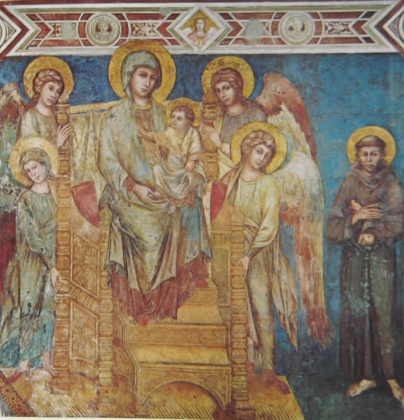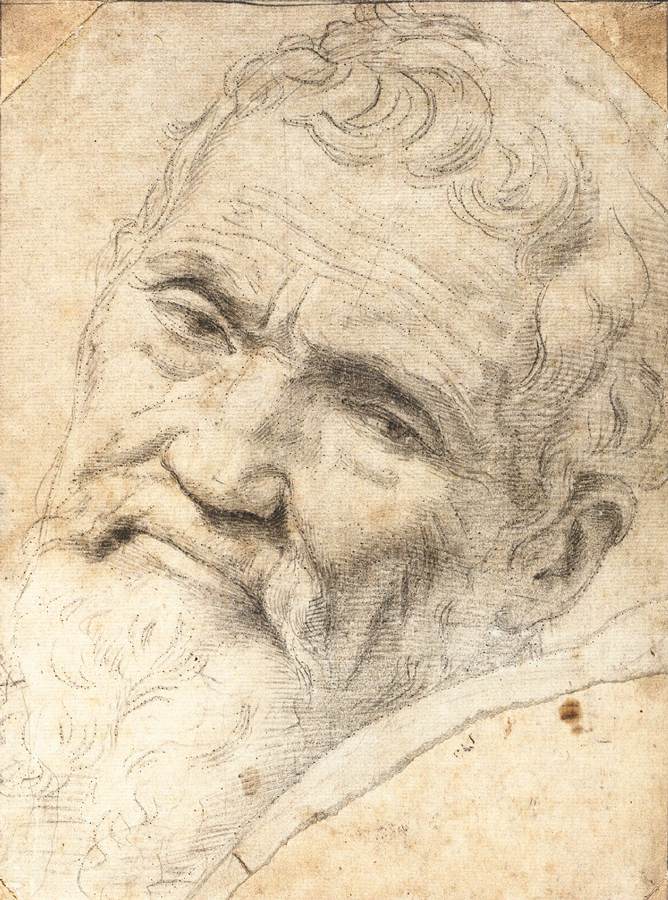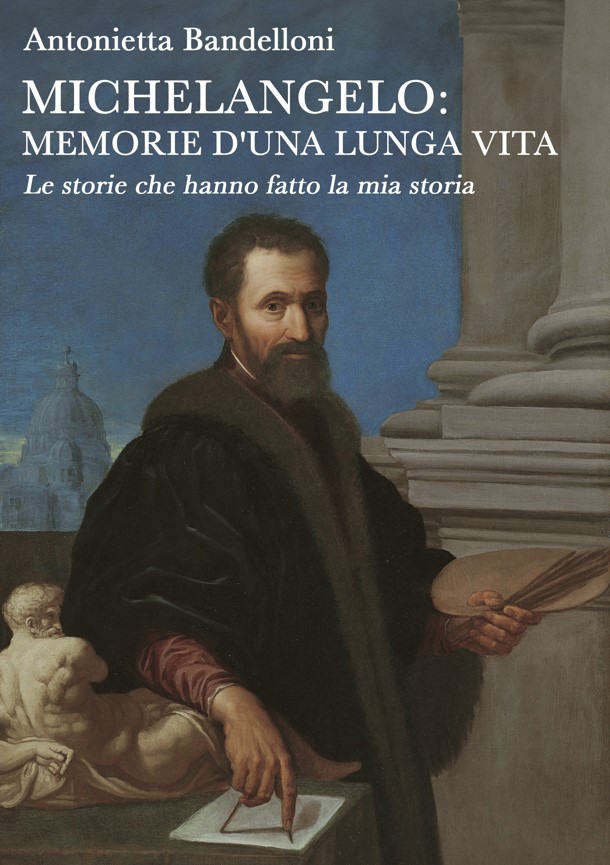4 ottobre: San Francesco nella storia dell’arte
4 ottobre: la giornata dedicata a San Francesco. L’umile ma grandissimo uomo di Assisi scelto come Santo Patrono d’Italia.
La sua figura mistica nel corso dei secoli ha ispirato molti artisti che si sono poi prodigati nel riprodurre le sue sembianze in modi talvolta molto diversi gli uni dagli altri.
L’opera pittorica più datata arrivata fino ai vostri tempi, è la tavola di Bonaventura Berlinghieri che racconta la sua storia. Pensate un po’: questo capolavoro fu realizzato dall’artista solo nove anni dopo la morte di San Francesco ovvero nel 1235 e si trova a Pescia, nella chiesa a lui dedicata.

Non molti anni dopo arrivò il pittore fiorentino Cimabue lavorando a diversi affreschi della Basilica inferiore di Assisi. Nel suo lavoro dedicato alla Vergine in trono fa la sua comparsa San Francesco in piedi.
Facondissimo nel parlare, ilare d’aspetto, benigno di viso, di statura mediocre, piccoletto anzichè no. Testa non grande e rotonda; faccia alquanto lunga e protesa; fronte piana e piccola; occhi di giusta misura, neri e semplici; capelli foschi; orecchie dritte ma piccole; tempia piane, lingua spedita, di fuoco ed acuta; voce veemente, dolce, chiara e sonora, denti uniti uguali e bianchi; piccole labbra e sottili; barba nera ma rada; collo stretto; omeri diritti, braccia brevi, mani scarne, dita lunghe, unghie non corte; gambe sottili, piedi piccoletti; pelle delicata; pochissima cerne, ruvida la veste; sonno brevissimo; mano generosa.
Ecco com’era San Francesco descritto da Tommaso da Celano: il suo primo biografo che ebbe modo di conoscere il Santo. A questa descrizione si sono attenuti un po’ tutti quelli che hanno voluto raffigurarlo nel corso degli anni, dalla sua morte fino a oggi.

Fra i cicli pittorici più noti c’è sicuramente quello attribuito a Giotto nella Basilica Superiore risalente agli ultimi anni del Duecento. Ventotto scene raccontano la vita del Santo in maniera assai dettagliata. Secondo il Vasari il ciclo fu commissionato da fra’ Giovanni Mincio Morrovalle nel 1296, l’allora generale dell’ordine francescano.

Anch’io disegnai un San Francesco per il barbiere del cardinale di San Giorgio. Lui lo adoperò per realizzare una tavola dipinta… vi ho raccontato tutta la storia peraltro assai curiosa QUA.
Bellissimo il San Francesco in meditazione del Caravaggio, realizzato nel 1605 per il cardinale Francesco Maria del Monte, oggi conservato presso la Galleria d’Arte Antica di Palazzo Barberini, a Roma.

Sempre il Caravaggio si cimentò nel dipingere un superbo San Francesco in estasi tra il 1594 e il 1595. L’opera oggi è conservata nel Wadsworth Atheneum di Hartford, in California ed è riconducibile al periodo di permanenza del pittore presso il palazzo del cardinale del Monte.
Per chiudere la rassegna di dipinti dedicati al Santo Patrono d’Italia vi propongo a seguire l’olio su tela di Guido Reni. San Francesco in estasi viene rappresentato all’interno di una grotta con un libro adagiato sulla roccia e un teschio. La semplice croce realizzata con rametti intrecciati e il rosario completano la scena.

Il sempre vostro Michelangelo Buonarroti per il momento vi saluta augurando un buon onomastico a tutti i Francesca e i Francesco.
- Il Cristo di Dalì a Roma: Giubileo all’insegna dell’arte
- ‘Michelangelo Buonarroti è tornato’: festeggio con voi i miei primi 10 anni d’arte, narrazioni, incontri e cambiamenti
- Notte dei Musei: Visite Gratuite e a un euro
- Dieci domande all’artista Fabio Cuffari: Pittura e Disegno Contemporaneo dall’Inquietudine al Sacro
- Il Dipinto del giorno: la Madonna della Seggiola di Raffaello e quella cornice non più originale
4 October: St. Francis in the world of art
4 October: the day dedicated to St. Francis. The humble but great man of Assisi chosen as the patron saint of Italy.
The mystical figure of him over the centuries has inspired many artists who then went out of their way to reproduce his likeness in ways that are sometimes very different from each other.
The oldest pictorial work that has come down to your time is the table by Bonaventura Berlinghieri which tells the story of him. Think about it: this masterpiece was created by the artist only nine years after the death of St. Francis or in 1235 and is located in Pescia, in the church dedicated to him.
Not many years later the Florentine painter Cimabue arrived working on several frescoes in the lower Basilica of Assisi. In his work dedicated to the Virgin enthroned, St. Francis appears standing.
Very easy to speak, hilarious in appearance, benign of face, of mediocre stature, small rather than not. Head not large and round; rather long and protruding face; flat and small forehead; eyes of the right size, black and simple; hazy hair; ears straight but small; flat temples, swift tongue, fiery and sharp; voice vehement, sweet, clear and sonorous, teeth united equal and white; labia minora and thin; black but sparse beard; narrow neck; straight shoulders, short arms, gaunt hands, long fingers, not short nails; thin legs, small feet; sensitive skin; very few hairs, the robe rough; very short sleep; generous hand. This is how St. Francis was described by Tommaso da Celano: the first biographer of him who got to know the saint. All those who wanted to depict him over the years, from his death to today, have followed this description to a bit.
Among the best known pictorial cycles there is certainly the one attributed to Giotto in the Upper Basilica dating back to the last years of the thirteenth century. Twenty-eight scenes tell the life of the saint in a very detailed way. According to Vasari, the cycle was commissioned by Fra ‘Giovanni Mincio Morrovalle in 1296, the then general of the Franciscan order.
I too designed a St. Francis for the barber of the Cardinal of San Giorgio. He used it to make a painted table … I told you the whole story, however, very curious HERE.
Beautiful is Caravaggio’s Saint Francis in Meditation, made in 1605 for Cardinal Francesco Maria del Monte, now housed in the Ancient Art Gallery of Palazzo Barberini, in Rome.
Caravaggio also tried his hand at painting a superb Saint Francis in ecstasy between 1594 and 1595. The work is now preserved in the Wadsworth Atheneum in Hartford, California and can be traced back to the painter’s period of stay at the Cardinal del Monte’s palace
To close the review of paintings dedicated to the patron saint of Italy, I propose you to follow the oil on canvas by Guido Reni. St. Francis in ecstasy is represented inside a cave with a book lying on the rock and a skull. The simple cross made with intertwined twigs and the rosary complete the scene.
Your always your Michelangelo Buonarroti greets you for the moment wishing a good name day to all Francesca and Francesco.

Sostienici – Support Us
Se questo blog ti piace e ti appassiona, puoi aiutarci a farlo crescere sempre più sostenendoci in modo concreto condividendo i post, seguendo le pagine social e con un contributo che ci aiuta ad andare avanti con il nostro lavoro di divulgazione. . ENGLISH: If you like and are passionate about this blog, you can help us make it grow more and more by supporting us in a concrete way by sharing posts, following social pages and with a contribution that helps us to move forward with our dissemination work.
5,00 €













Grazie per il post🙏
"Mi piace"Piace a 1 persona
Prego 😉
"Mi piace"Piace a 1 persona